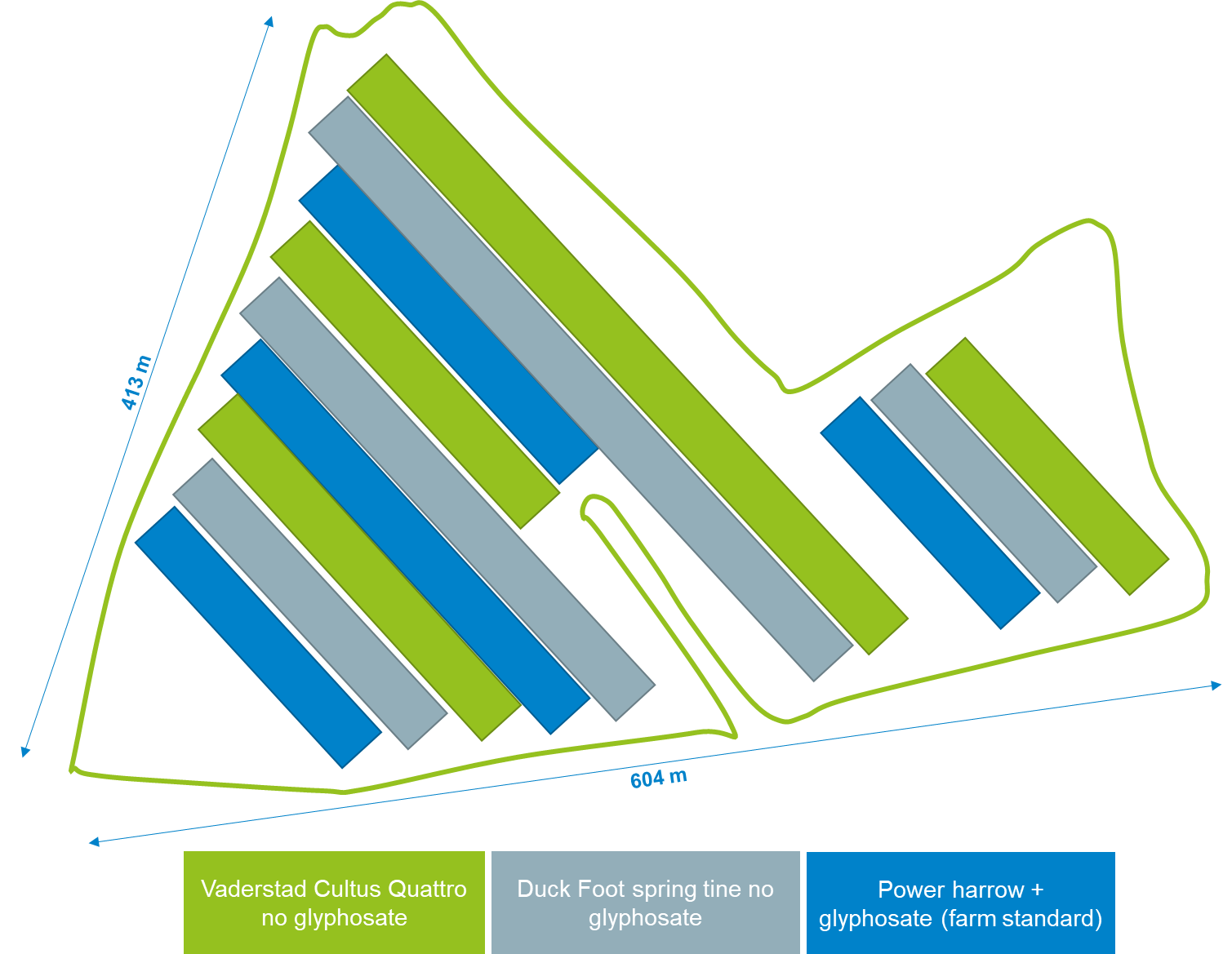- Home
- Autumn black-grass control
Autumn black-grass control

Autumn black-grass control
How do different stubble management strategies before sowing effect weed control? A trial at our Strategic Cereal Farm West is assessing autumn black grass control options.
Controlling autumn black-grass – trial summary
- Start: 18 September 2020
- End: Harvest 2021
Chemical and cultural controls for autumn black grass
Weed management is challenging. Farmers and agronomists must cope with regulations, herbicide resistance and a lack of new control methods. Research has shown that there is a need to integrate chemical and cultural controls. This trial tests the effectiveness of different stubble management strategies before sowing.
How are the autumn black-grass control trials run?
This replicated tramline trial is in Field 41 (12 hectares) in KWS Saki winter wheat.
There are three treatments in the trial. Strategic Cereal Farm West host, Rob Fox, cultivated the field on 18 September 2020. He repeated the cultivations for treatments 2 and 3 on 30 September.
- Power harrow to a depth of 3-8cm + glyphosate. This is the farm standard treatment
- Duck Foot spring tine to a depth of 4-7cm
- Vaderstad Cultus Quattro to a depth of 4-8cm
Rob drilled the trial using a tine seed drill on 1 October 2020 at a rate of 185 kg/ha. The soil type ranges from shallow over sandstone to very heavy clay.

Results from autumn black-grass control trials so far
Weeds
On 18 September 2020, the black-grass levels were quite low. It was only found on the headlands rather than in the treatment tramlines. The research team found a lot of spring barley volunteers competing with the black-grass. The spring barley may have also changed the moisture and temperature of the soil surface.
On 26 October 2020, ADAS completed a second weed assessment. They found cleavers across the field.
In April 2021, the field team found black-grass on the heavier soils. They also found cleavers on six of the tramlines.
Cultivations
The farm standard treatment resulted in good tilth and small crumb size. The cultivation destroyed the spring volunteers well. It lifted them out of the soil and onto the surface to dry.
The second treatment was the Duck Foot spring tine. The depth was still shallow so didn't bring up any weed populations from depth. It did leave the soil in mini ridges and it didn't manage to remove all the volunteers.
The third treatment was the Vaderstad Cultus Quattro. The range in soil types resulted in variation in the cultivation depth and affected the quality of the seedbed. There were larger clod sizes and surviving spring barley volunteers. These could be difficult to control without glyphosate.
Soil health
In April 2021, ADAS completed soil health assessments. These include:
-
penetrometer resistance
-
topsoil analysis
-
visual evaluation of soil structure
-
bulk density
-
moisture content
-
earthworms
Assessing autumn black-grass control
Weeds
At GS60, ADAS will count the weed density every 20 metres in each treatment. They will also map the black-grass using a drone.
Yield
At harvest, the farm will collect combine yield data for ADAS to analyse.
Cost of production
The Farm Economics team will calculate the economic cost of production of the winter wheat in each trial field. Using Farmbench, they will produce costs per hectare and per tonne. The calculations will use:
-
Seed, fertiliser and crop protection
-
Farm labour, machinery and equipment
-
The regional average for property, energy and administration
Useful resources
Managing resistance risk to retain long-term effectiveness of glyphosate for grass-weed control
How to manage black-grass in arable crops
Our Strategic Farms are an opportunity to see how to use our research on a commercial farm. Find out more about our Strategic Cereal Farm West Programme

